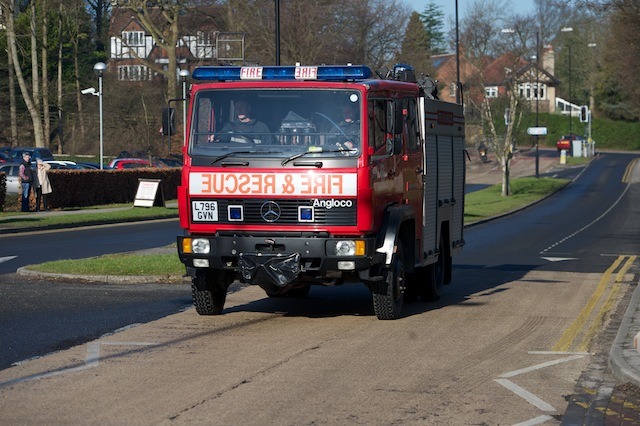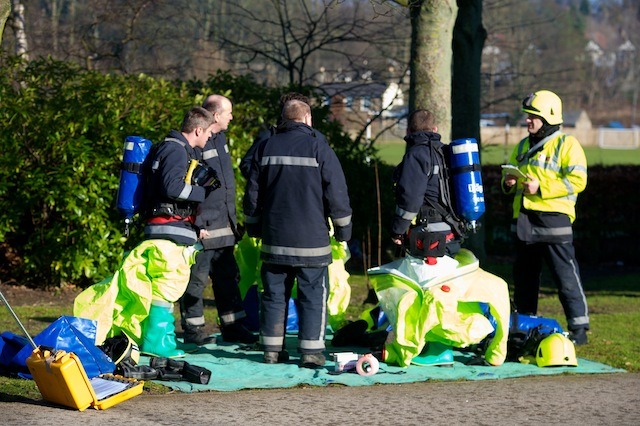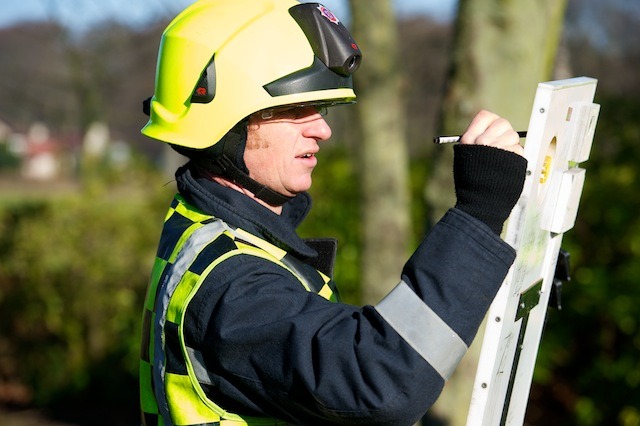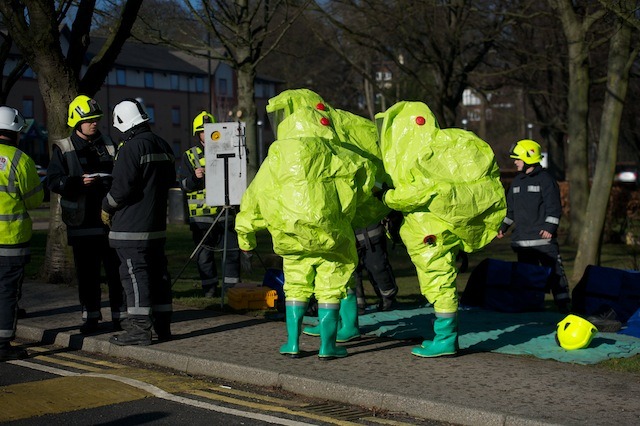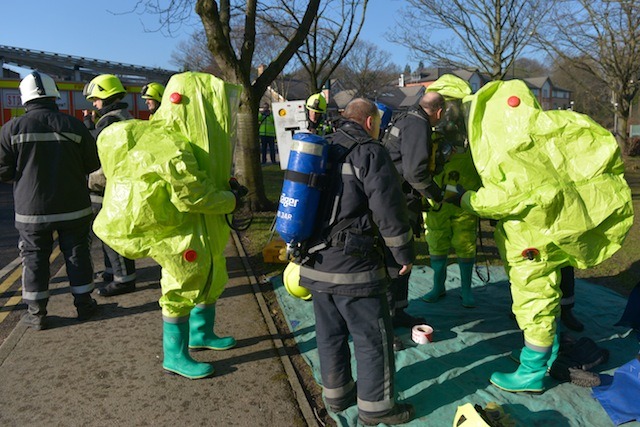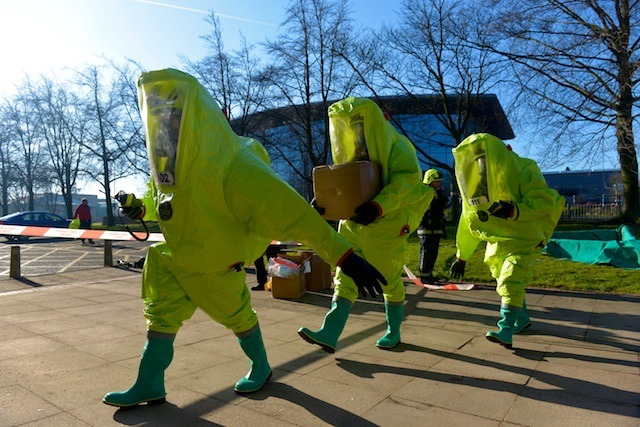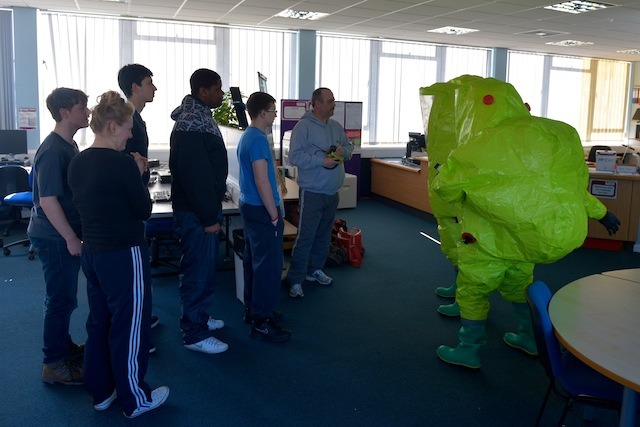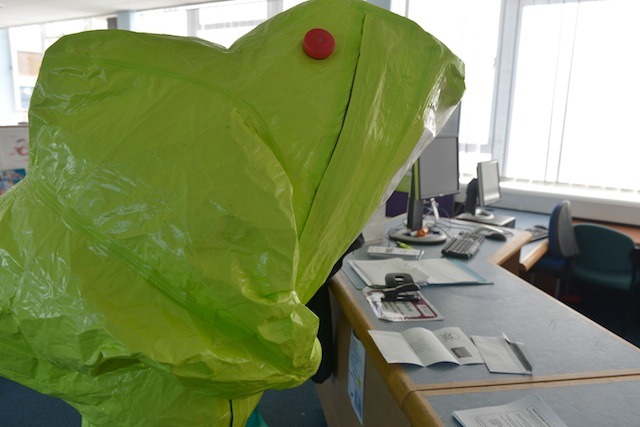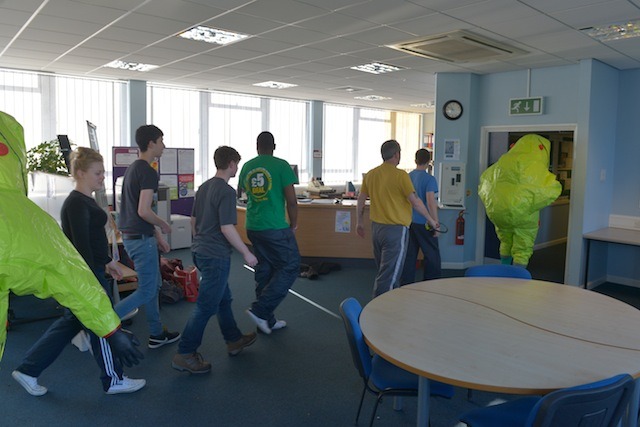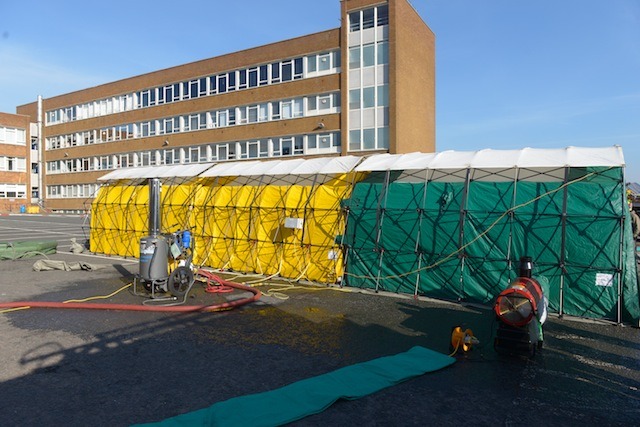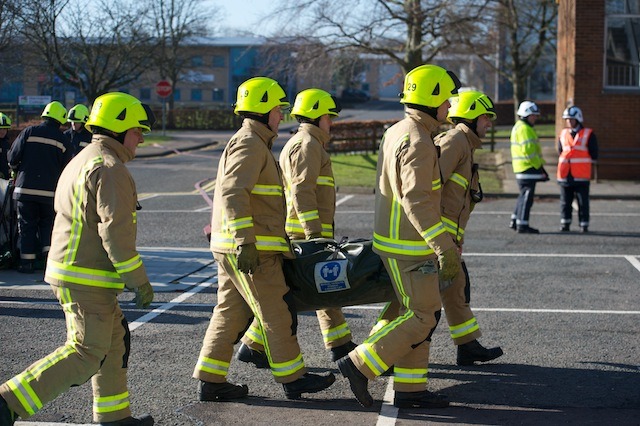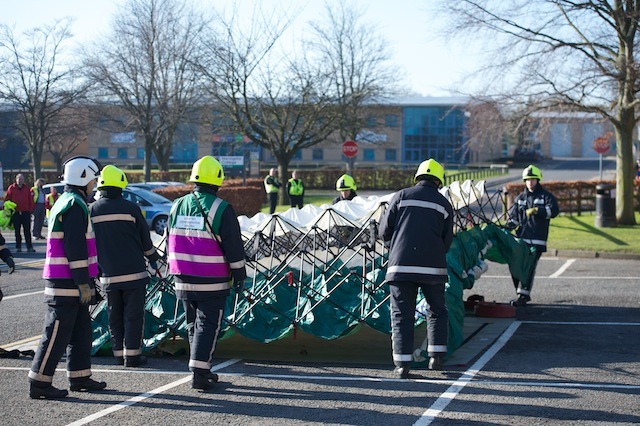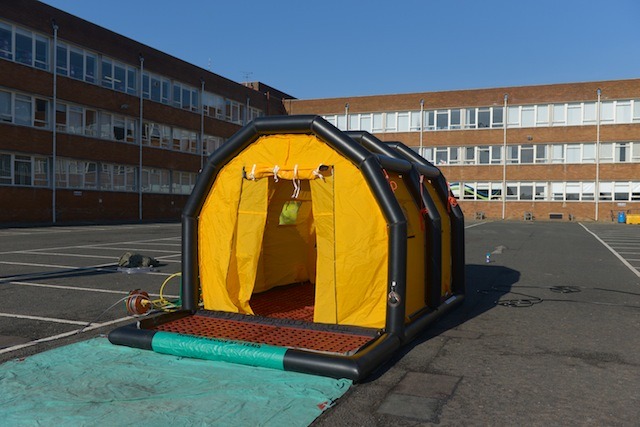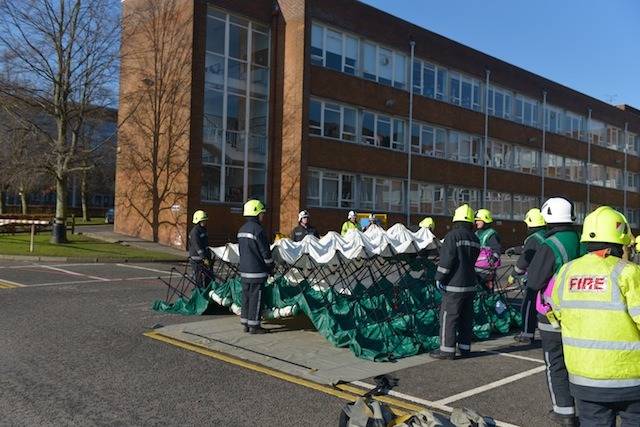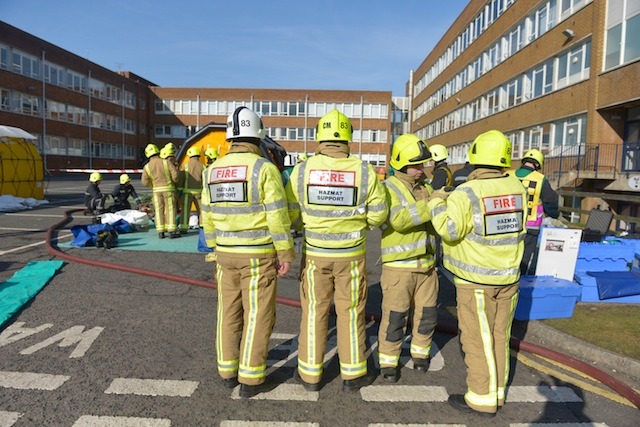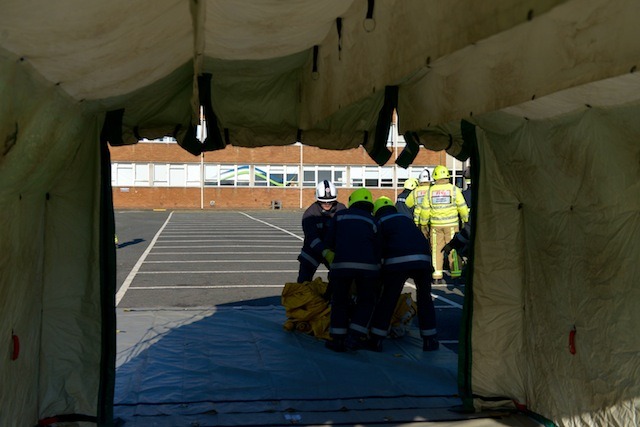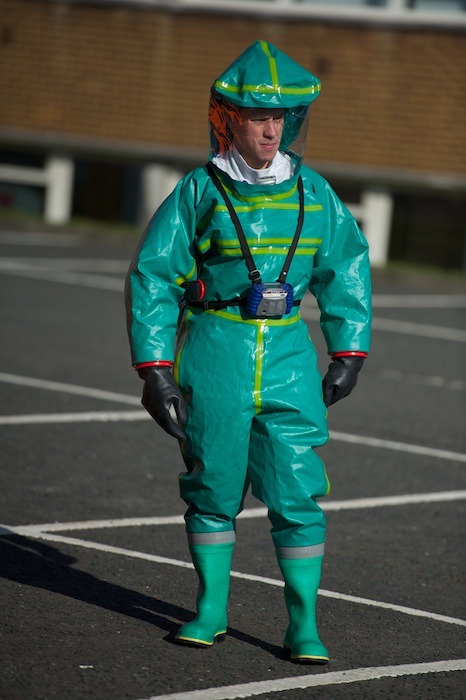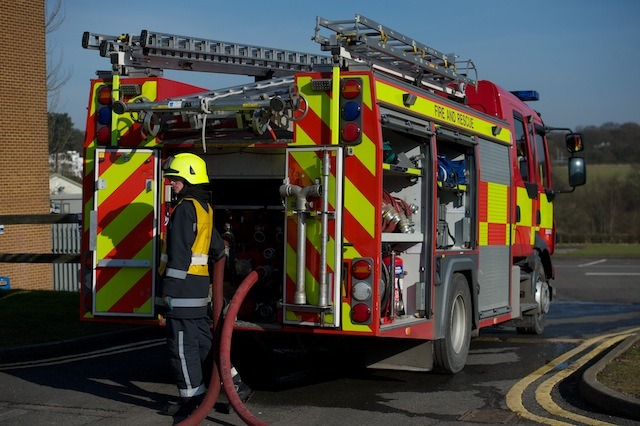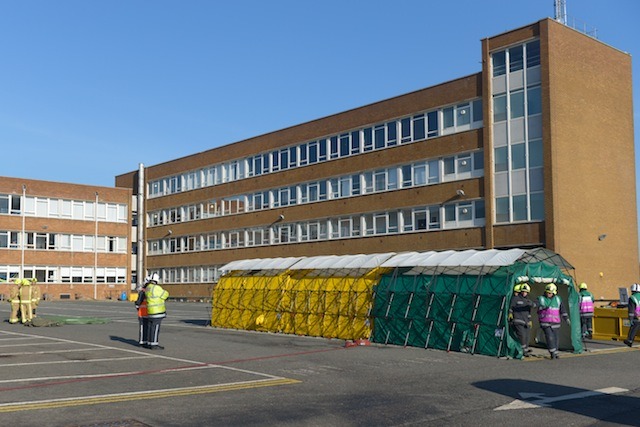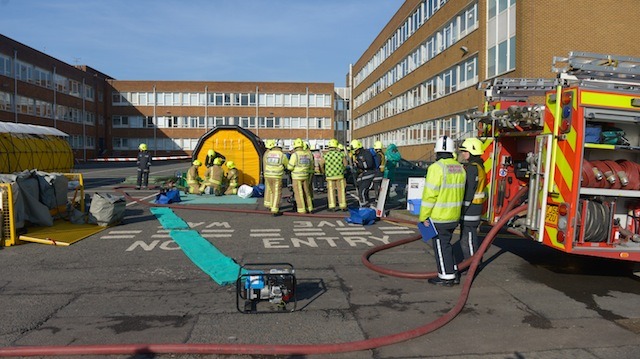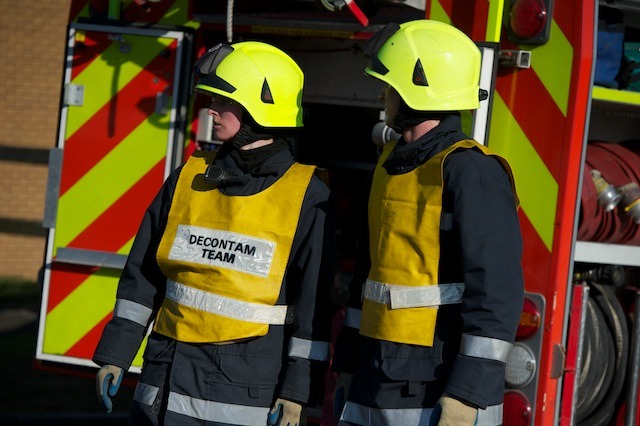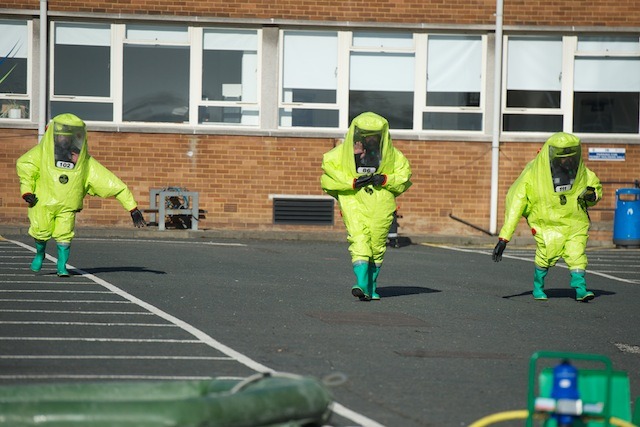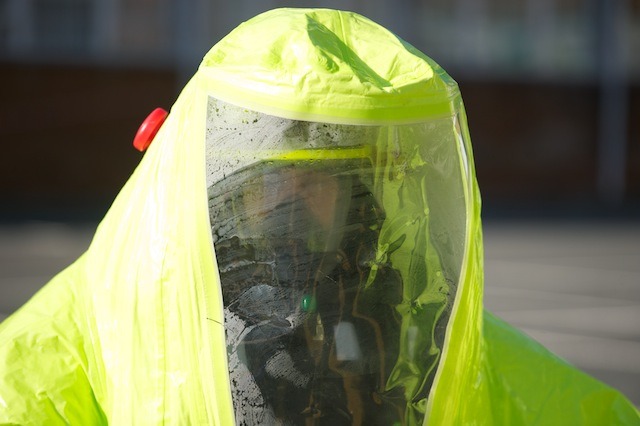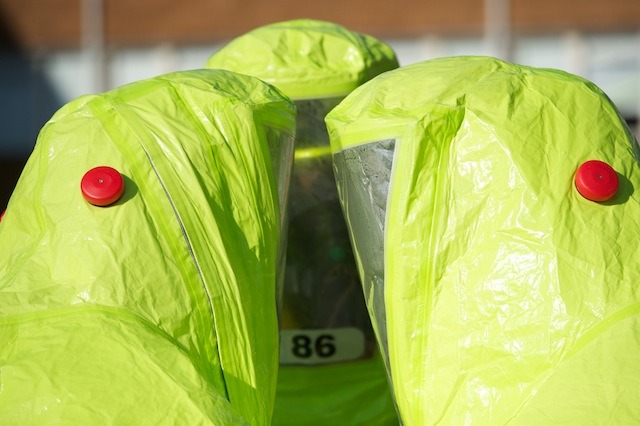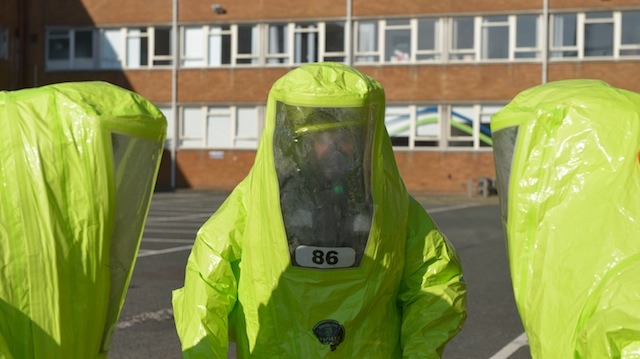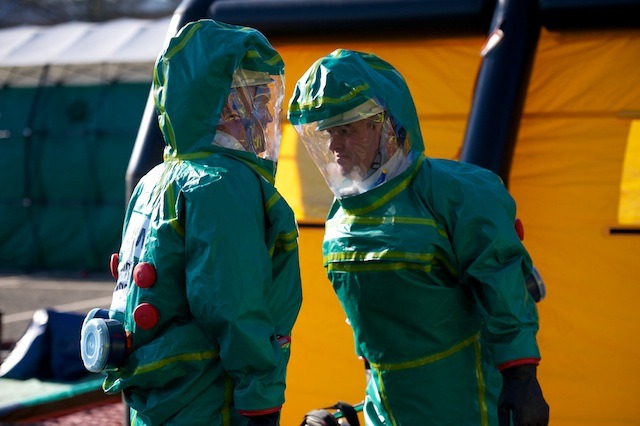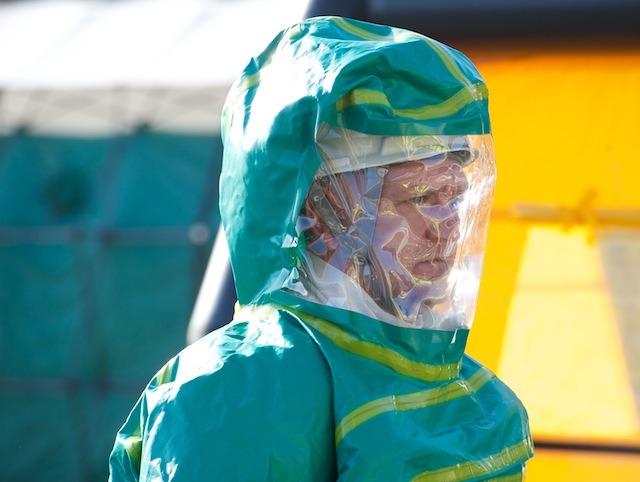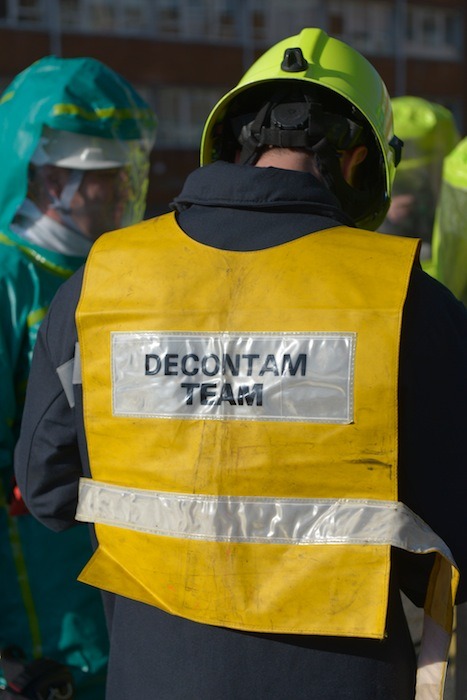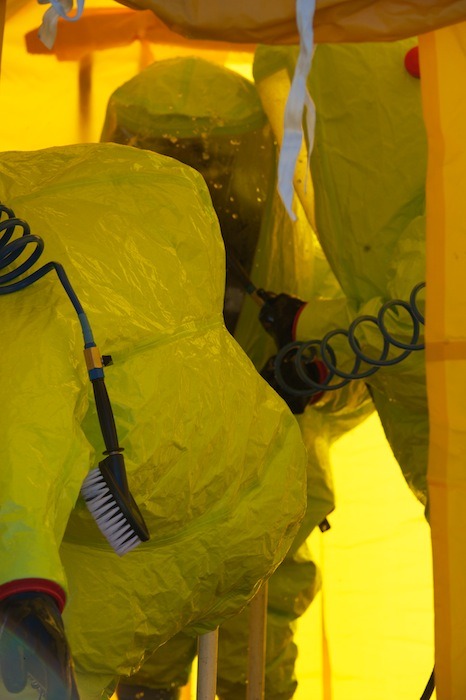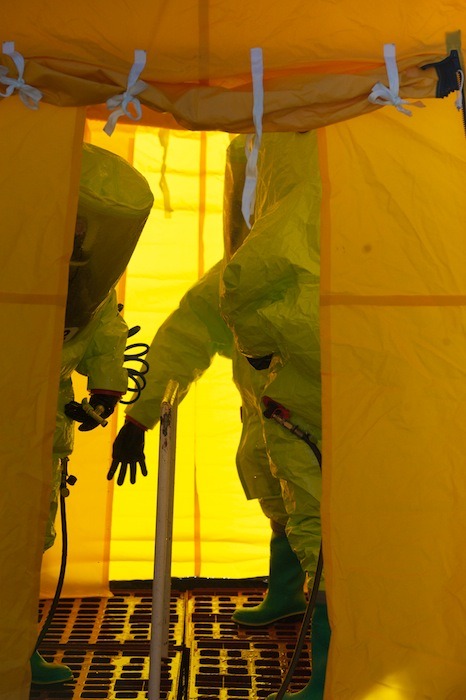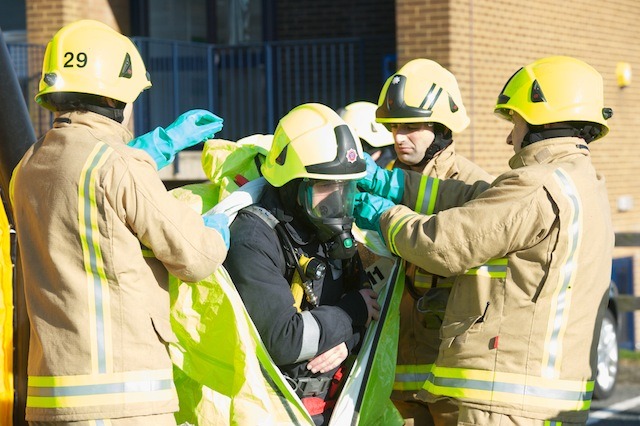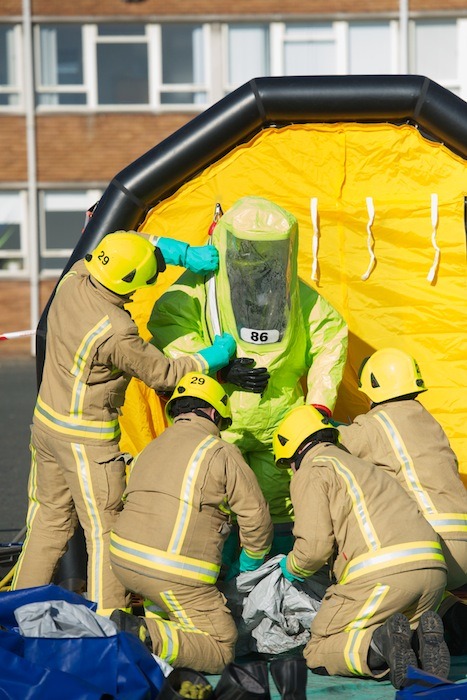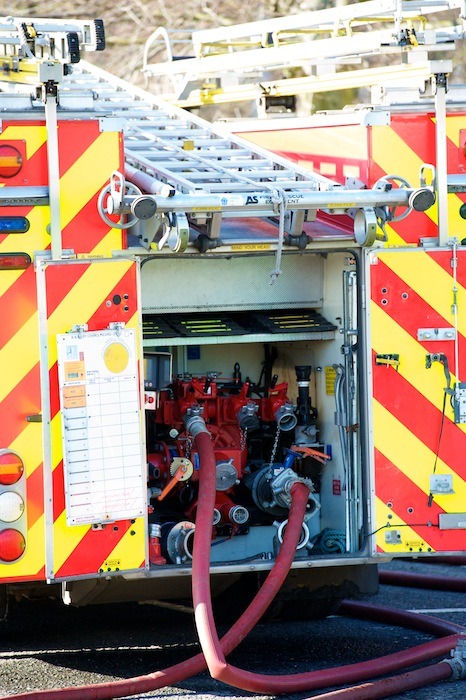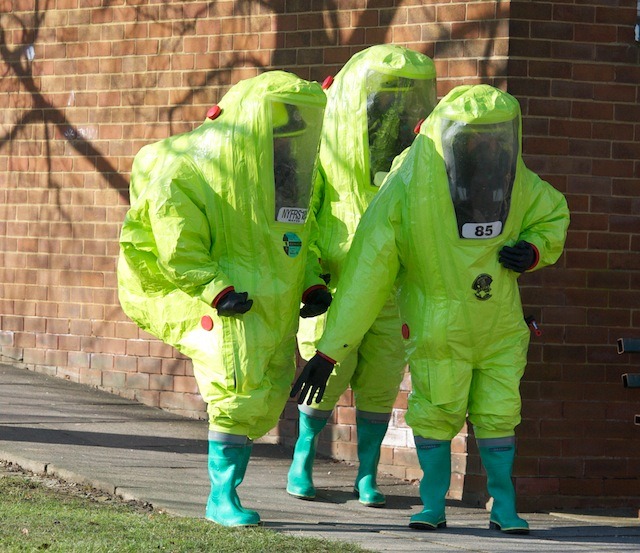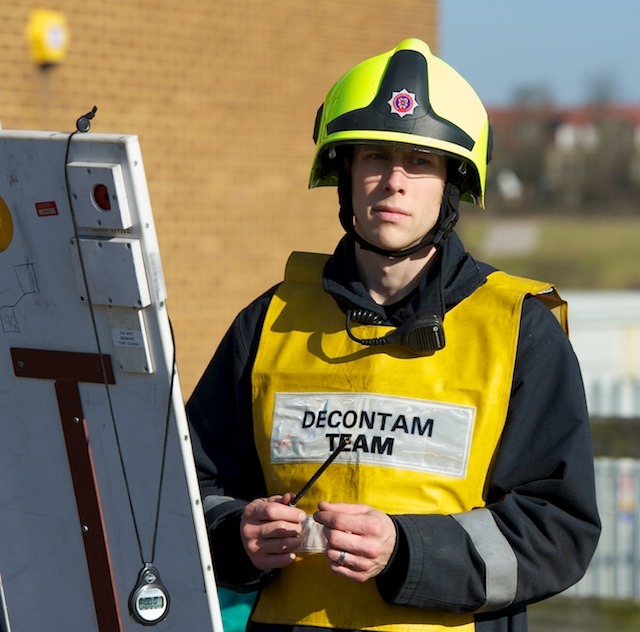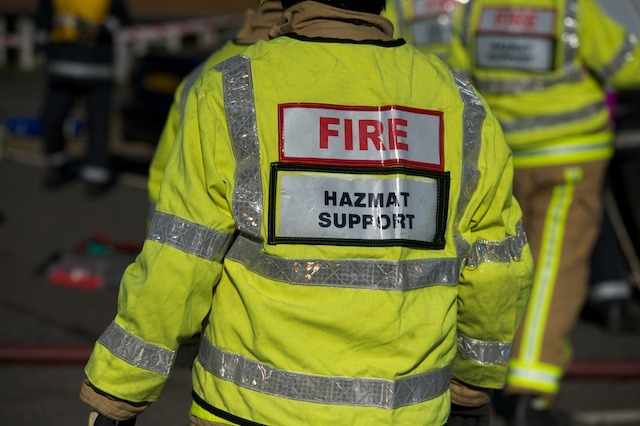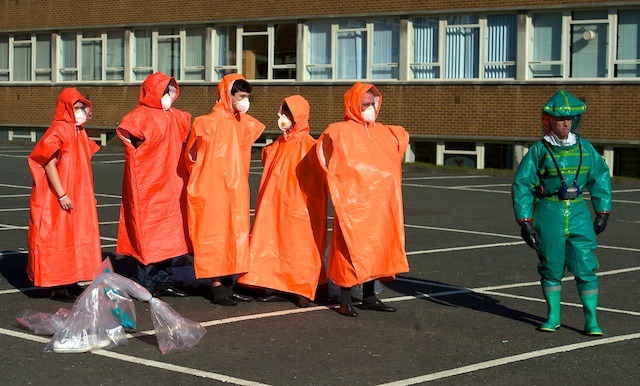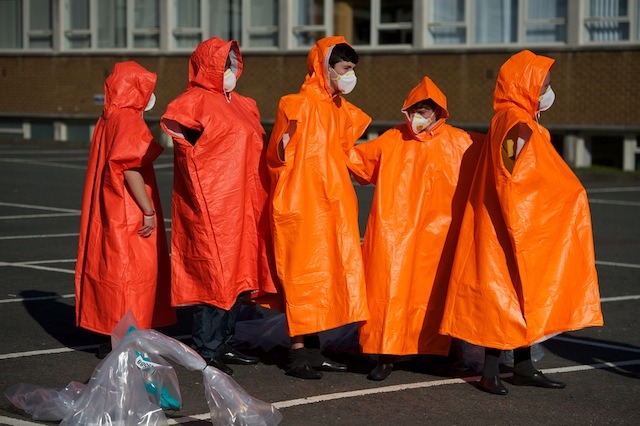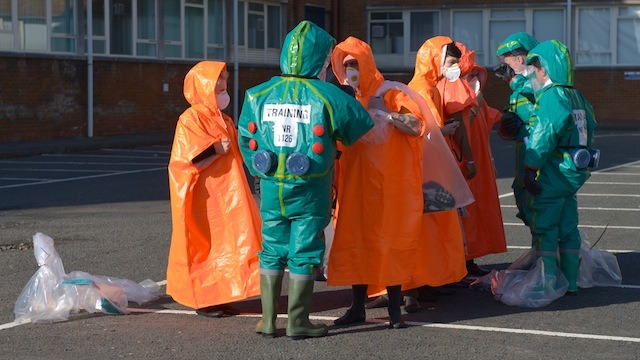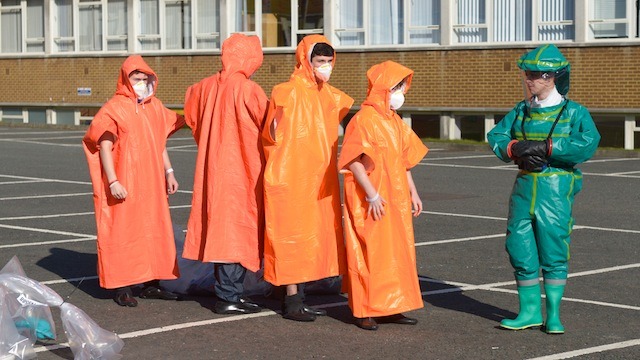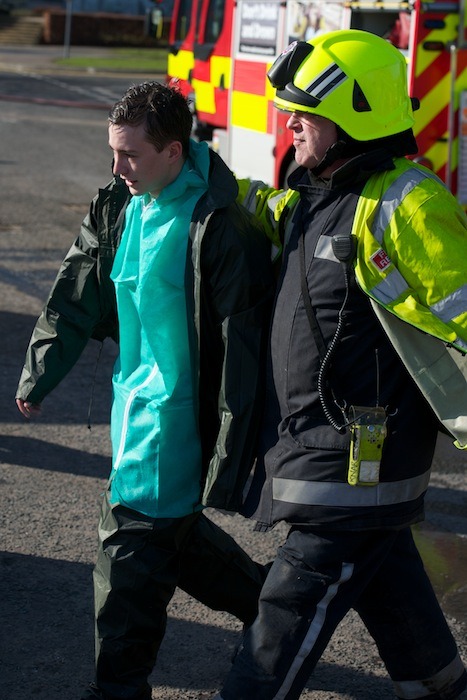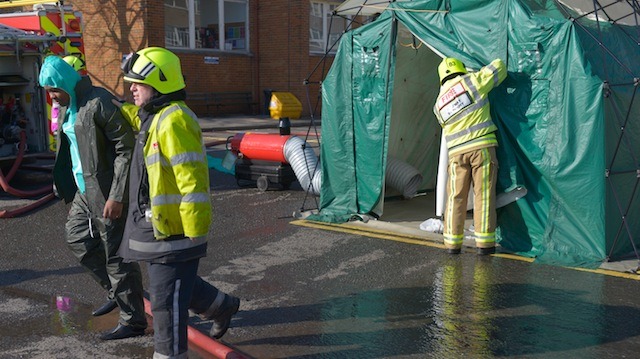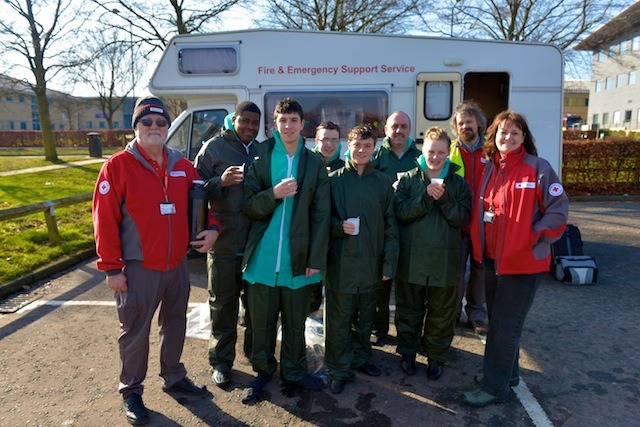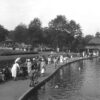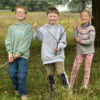North Yorkshire Fire Service held a training exercise at Hornbeam Park in Harrogate at the weekend (17 Feb 2013) – simulating how they would handle a dirty bomb and contaminated people.
This was part of routine training by the Fire Service, practising procedures and using equipment not used very frequently. It was not instigated due to a perceived increased likelihood of this type of incident.
The scenario was that a letter had been opened at Harrogate College and was found to contain a white powder, there was also a letter saying that the power contained Anthrax.
As part of the simulation the police attended the incident, but did not enter for fear of further contamination.
Group Manager, Mal Austwick said:
The exercise was to simulate an unknown hazardous material incident in which a number of people were contaminated with an unknown white powder.
North Yorkshire Fire and Rescue Service Control mobilised appropriate resources to deal with the incident under exercise conditions.
This included utilising the National Resilience Mass Decontamination Showers based at Acomb fire station and calling on the assistance/support of the DIM team from WYFRS.
In a real life scenario it would have been likely that some of those infected would have fled the building. This can then cause problems with later admission to hospital and contamination of the hospital.
The emergency services strategy is to contain the contamination, identify the threat and decontaminate those involved.
As would have happened in a real life incident, an incident response plan was put into place that mobilised many units within Yorkshire.
Mal Austwick said:
By using live casualties (the member of staff, plus 9 students from Harrogate College) the fire and rescue personnel, along with NYP officers attending were faced with as near to a real incident as possible.
Around 80 fire service personnel assisted from both North and West Yorkshire.
- Harrogate – 1 fire engine
- Knaresborough – 1 fire engine
- Wetherby, West Yorkshire Fire and Rescue Service (WYFRS) – 1 fire engine
- Otley, WYFRS – 1 fire engine
- Acomb – 1 fire engine and their Incident Response Unit
- Tadcaster – 1 fire engine and their Heavy Rescue Unit
- Malton – 1 fire engine
- Northallerton – Incident Command Unit
- Skipton – 1 fire engine
- Summerbridge – 1 fire engine
- Dewsbury, WYFRS – 1 Detection, Identification & Monitoring (DIM) Team and 1 DIM support team vehicle
The units positioned themselves at various points around the building. An initial unit used air-tight PPE suits and entered the building by the main entrance.
Mal Austwick talking about cross-border working with West Yorkshire Fire & Rescue:
Cross- border working is essential for all the Emergency Services who work along the County boundaries between North Yorkshire and West Yorkshire as each Service does have slightly different equipment and operating procedures.
By working closely in a training environment like this exercise improves working practises and understanding of each others procedures. And importantly professional working relationships between staff is improved. NY and WY fire and rescue crews have been training together for many years so as to provide the best possible Emergency Service to the community should they need to call upon us.
With anticipation of contaminated further setup a decontamination area using portable tent type structures. These were the main decontamination units for both the students and the fire personal.
The students were stripped of potentially contaminated clothes and led from the building in orange smocks. They entered the decontamination unit where they showered and then dressed in clean clothes.
They were then met by members of the British Red Cross and given drink. In an actual incident they would then be given access to make phone calls. They provide the after-care following incidents, sometimes accommodation when needed.
Mal Austwick concluded:
The whole exercise was a success from the first fire engine arriving and having to deal with an unfolding complex hazardous materials situation, through to setting up Mass Decontamination structures to decontaminating the casualties (students).
The Fire and Rescue Service and the other agencies who attended will be able to use any learning points made by the exercise observers to improve their capabilities in the future should an incident of this type every occur.
North Yorkshire Fire and Rescue Service would like to thank Harrogate College for allowing them the use of the building to carry out this exercise. Without the support of other agencies the Service would not be able to undertake such large scale exercises like this one.
In particular we would like to thank Steve Swailes and his students who are currently undertaking the Public Services Uniformed Course at the College for their time and commitment throughout the exercise scenario.
The Service hopes they gained an insight into some of the work carried out by the emergency services whilst taking part in this exercise.
By exercising in the way we do and highlighting exercises such as this through the media portals available to us provides the communities of North Yorkshire and the City of York with the reassurance that we are a highly trained, professional organisation with a commitment in providing the best possible Fire and Rescue Service to its community.
